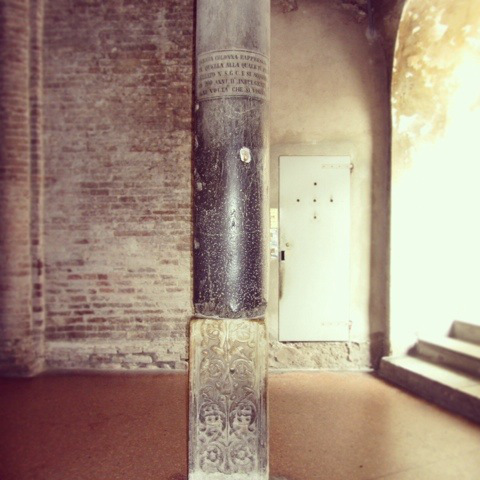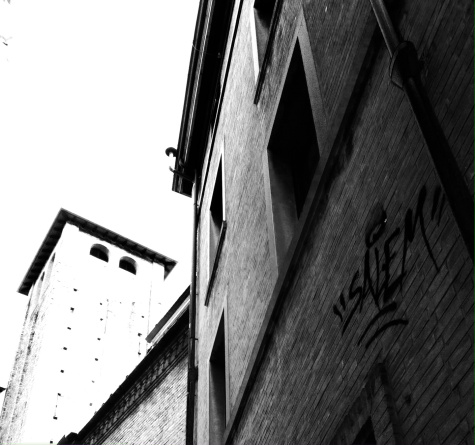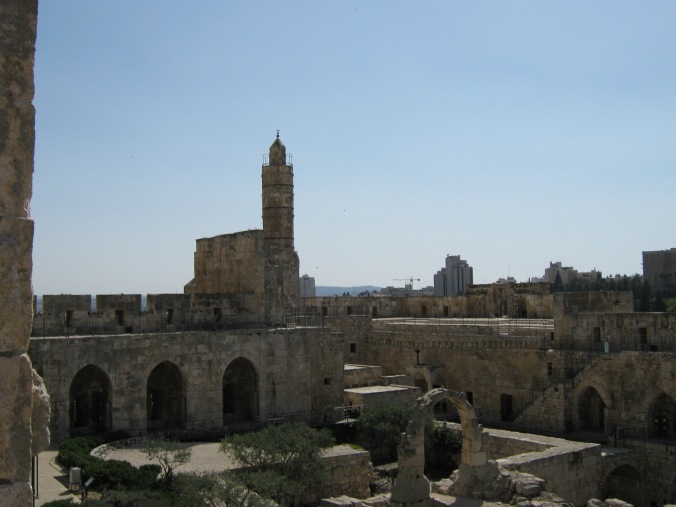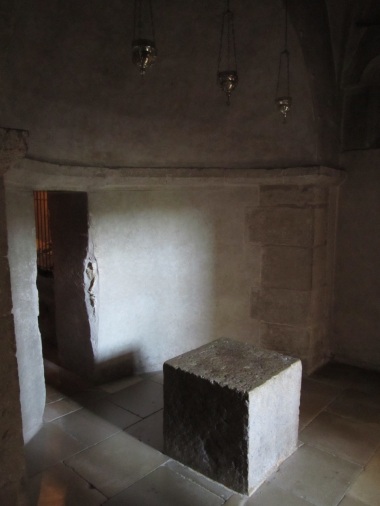
Professor Anthony Bale, Birkbeck, University of London
Cross-posted from ‘Remembered Places’.
Many medieval copies of Jerusalem function at the level of metonymy: a part suggests the whole, a symbol evokes a distant and holy world. Sometimes a polygonal or round building or some crenelated battlements function as a shorthand reference to Jerusalem. Sometimes it was simply the Easter Sepulchre placed in church which once a year became the Jerusalem of Jesus’s death and resurrection. However, in the Italian city of Bologna, a remarkable landscape was crafted in which the urban fabric was Jerusalem, not only on a symbolic level but as lived, familiar space. The beautiful Nuova Gerusalemme at the church of Santo Stefano in Bologna has been much altered since its twelfth-century heyday, but it can still be visited and its Jerusalem-ish landscape appreciated.
Readers who want to know more about the historical and liturgical background of the Bologna site are referred to Robert Ousterhout’s 1980 article, from which much of my information is taken. I visited the site last week and in this post I share some of the thoughts I had about it.
The complex of churches existed since at least the sixth century and probably somewhat earlier, built over a Roman temple of Isis. At the centre was a round church dedicated to the Holy Sepulchre. In the twelfth century – in fact, within sixty years of the First Crusade of 1099, when the Crusaders successfully took Jerusalem – the chapels in Bologna were redesigned to ‘resemble’ Jerusalem. The San Sepulcro chapel (pictured above), with its distinctive ‘circular’ (polygonal) shape, was built c. 1100-1140 and continues to recall the main rotunda of the Anastasis at the Jerusalem Church of the Holy Sepulchre. Twelve columns (suggesting the deep significance of the number twelve: the Twelve Tribes of Israel, the Twelve Apostles, etc.) are arranged around a copy of the medieval ‘aedicule’, the small tabernacle or booth at the site of Christ’s empty grave (pictured below). The exterior brickwork has further polychromatic polygonal designs in it, suggesting other mnemonic devices to recall the patterns and symbolism of the heavenly and earthly Jerusalem.
As well as the aedicule, within this round church there remains a medieval copy, in similitudine, of the column on which Jesus was scourged (pictured below), akin to the twenty-first century whipping post at the Holy Land park in Florida. The building reproduces the atmosphere and main sites of the Holy Sepulchre; it shows clearly how, at a period in which thousands of Crusaders were travelling to Palestine, their ideas, knowledge, and religious culture was also travelling back to Europe.
One passes through the round church to Cortile di Pilato, a courtyard associated from the later Middle Ages with Pontius Pilate containing an ancient well (in the first picture, above), recalling Pilate’s washing of his hands (Matthew 27). Off the courtyard once stood various other small chapels recalling biblical and quasi-biblical episodes of the Passion of Jesus: a prison-cell, a Calvary, a now-vanished chapel in similitudine marking the site of Christ’s appearance to Mary Magdalene.
The distance from the Calvary to the aedicule of the Resurrection is 42 meters; this is based on the specific proportions of the Church of the Holy Sepulchre, in which the distance between these sites is 41.6 meters (Ousterhout, p. 312).
As Ousterhout showed, the chapels and shrines photographed here were just a part of a bigger civic complex: at Easter, a dramatic liturgical procession took place, moving from the nearby church of St John on the Mount (now rebuilt, which played the role of the Church of the Ascension on Jerusalem’s Mount of Olives) to the church of St Thekla (now demolished and replaced with a luxury fashion shop in a Baroque palazzo, the location mirrors Jerusalem’s Kidron Valley, the dedication to a saint especially popular in Palestine, Cyprus, and Lebanon). From St Thekla the procession continued to Calvary and the Holy Sepluchre at the Santo Stefano complex.
Based quite precisely on the dimensions of the Church of the Holy Sepulchre as it was found, in a dilapidated state, by the crusaders, before they rebuilt it in the 1150s and ’60s, the complex sought to improve on the Holy Sites in the Holy Land, replaying holy space in a discontinuous but liturgically resonant cityscape. The Bologna complex, which Ousterhout says was ‘intended to be more than just a souvenir copy’, was an ambitious act of Occidentalism. By this I mean that it shows how the Eastern spaces being remodelled by the Crusaders in Palestine were generated in conversation with western European ideas of biblical history and liturgical memory. This was a western space developed by the West through its fantasies of the East; the East was then remade in this image. The Bologna complex continues to be a potent reminder of Jerusalem: or, should we say, Jerusalem continues to be a potent reminder of Bologna?



Postscript: on the side of the Bologna complex is a recent piece of graffiti (above): the name ‘Salem’, the Latin name for Jerusalem. This is cognate with the Hebrew word ‘shalom’ (peace) but also recalls the earliest biblical name of Jerusalem, Salem (שלם; Genesis 14).












